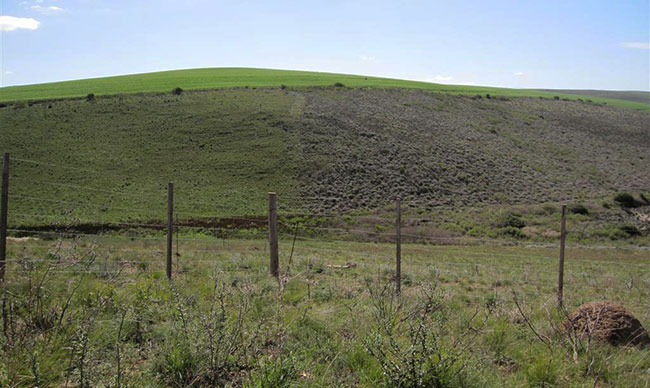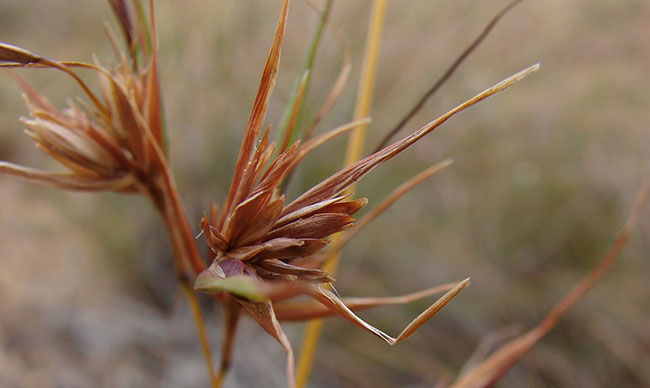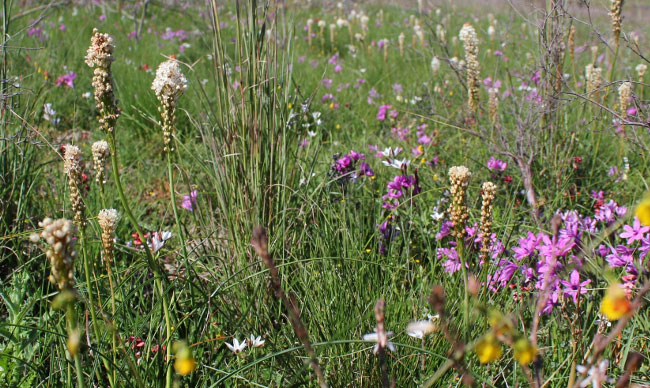Renosterveld is a lot more than a Critically Endangered vegetation type. It’s also home to a number of very tasty plant species (for animals, that is). Like Rooigras (Themeda triandra), Roisaadgras (Ehrharta) and some very palatable shrubs and vygies.
In past centuries, large herds of game roamed the Overberg. And they depended on these Renosterveld species for survival. Imagine vast herds of eland, quagga or buffalo moving through this landscape, ‘managing’ Renosterveld in the way nature intended.
Above: South slope burn vs unburned
Today, the landscape looks very different. But remaining Renosterveld patches can still contain these preferred plants – if they’re managed well.
That means, they can also provide vital grazing for livestock (think: drought in the Overberg.) Well-managed Renosterveld patches proved crucial for many farmers in recent years here, in the dry conditions. (A quick note here: Grazing should be seen as a management tool to protect Renosterveld, and not solely as a food source for livestock).
For farmers, things can go very wrong in your Renosterveld after a fire. So here are some tips to encourage landscapes of flourishing (and tasty) Renosterveld.
- Don’t burn more frequently than every 10-15 years. The burning frequency depends on veld type and annual rainfall. But this serves as a guideline.
- Don’t graze immediately after a fire. We recommend resting the veld for AT LEAST 2 years before grazing.
- When you do start grazing after 2 years, rather let livestock in during the late summer months, and only for a short period.
Above: Themeda triandra
Why? For one, to promote better quality grazing in the long term.
If you allow your livestock to graze in your Renosterveld immediately post-fire, they’ll opt for the more palatable species. That will put pressure on these plants, and give species like Renosterbos an advantage over the edible bulbs, grasses and soft shrubs.
(Bear in mind, science provides new information all the time. And things change. So as we learn more, we update our Renosterveld management guidelines. These guidelines are based on our current knowledge. But we’re part of, and are supporting studies that look into Renosterveld management.)
Farmers: Need help managing your Renosterveld?
Through funding support from WWF, we can help farmers looking to manage their Renosterveld. That includes help in livestock management on Renosterveld, ecological burns, alien clearing, erosion control, and more.
Contact us. Email: keir@overbergrenosterveld.org.za





